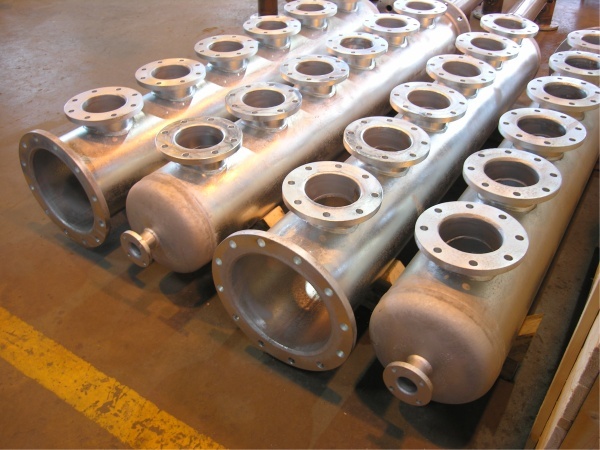Cunife 1 The Special Alloy

Cunife 1 is an alloy used in making wires in light bulbs and thermionic valves. It composes of copper, nickel and iron. A sample of Cunife 1 was immersed in an bath, and of hydrogen gas was collected under and . However, one metal in the alloy was purely unoxidized. Another sample of Cunife 1 at was then dumped in a calorimeter containing water at and at thermal equilibrium the temperature of the metal-water mixture was measured at by the calorimeter’s thermistor. What is the percent composition (by mass) of copper in Cunife 1?
Hint : One of the metals cannot be oxidized by .
Details and Assumptions :
-
Universal Gas Constant .
-
Specific heat in : – 0.39, – 0.44, – 0.45, – 4.184
-
Molar mass in : – 63.55, – 58.69, – 55.85.
The answer is 59.96.
This section requires Javascript.
You are seeing this because something didn't load right. We suggest you, (a) try
refreshing the page, (b) enabling javascript if it is disabled on your browser and,
finally, (c)
loading the
non-javascript version of this page
. We're sorry about the hassle.
Let x , y and z be the mass of Cu, Ni and Fe, respectively.
Sum of the masses: We know that the in both experiments the sample mass is 10.00 g. The equation is as follows: x + y + z = 1 0
First experiment: By activity series, the unoxidized metal is Cu. There should be no “x” term in the equation. The stoichiometric ratio is 1:1 or moles of metal = moles of hydrogen gas. Thus the equation is as follows:
5 6 . 8 9 m o l g y + 5 5 . 8 5 m o l g z = 0 . 0 8 2 0 6 m o l K L a t m × 2 9 8 . 1 5 K 0 . 8 5 4 9 4 L × 2 a t m = 0 . 0 6 9 8 9 m o l
Second experiment: For a calorimeter, − q w a t e r = q m e t a l = ( ∑ i n m i c i ) Δ T
− q w a t e r = ( 5 0 . 0 0 g ) ( 4 . 1 8 4 g K J ) ( 1 1 . 7 3 8 ℃ − 1 0 . 0 0 ℃ ) = 3 6 3 . 5 8 9 6 J 3 6 3 . 5 8 9 6 J = [ ( 0 . 3 9 g K J ) x + ( 0 . 4 4 g K J ) y + ( 0 . 4 5 g K J ) z ] ( 1 0 0 . 0 0 ℃ − 1 1 . 7 3 8 ℃ )
Simplifying, we get 0 . 3 9 x + 0 . 4 4 y + 0 . 4 5 z = 4 . 1 1 9 4
Thus we have a system of three equations. Solving the system, we get x = 5 . 9 9 6 g , y = 2 . 0 8 4 g , and z = 1 . 9 2 0 g .
Thus the composition of Cunife 1 is 59.96% Cu, 20.84% Ni and 19.20% Fe.